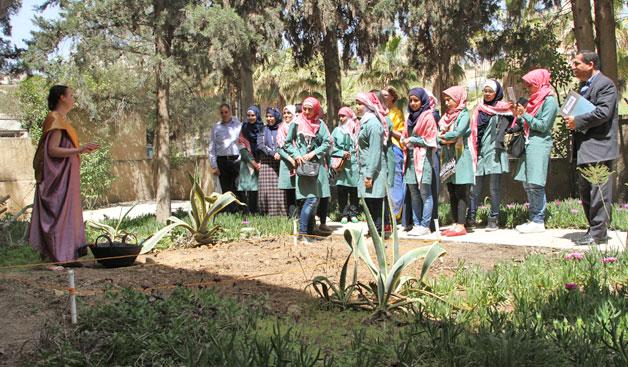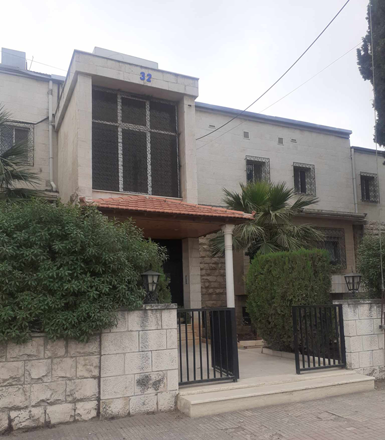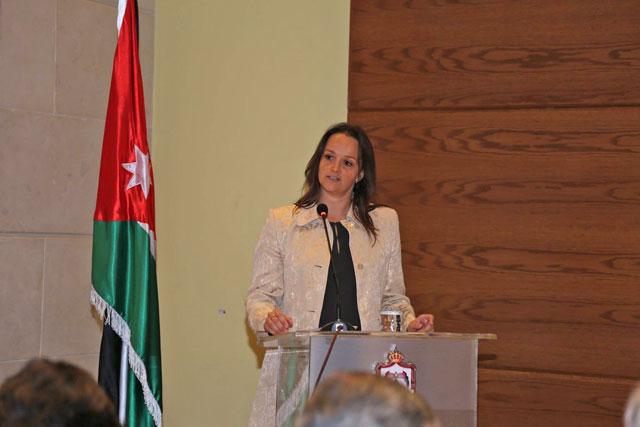You are here
German legacy of exploration in Jordan continues at Amman archaeology institute
By Saeb Rawashdeh - Jul 01,2016 - Last updated at Jul 01,2016
AMMAN — Germany’s intellectual curiosity about the holy land dates back to the arrival of German orientalists in the early 19th century, and it is thriving today at the German Protestant Institute of Archaeology (GPIA) in Amman.
Ulrich Jasper Seetzen, the German explorer of Arabia and Palestine, came to the Middle East in 1802 and four years later explored the ancient sites of Gadara (Um Qais) and Gerasa (Jerash) in northwestern Jordan.
German researchers visited the region in 1837 through other pioneers, including geographer Gotthilf Heinrich von Schubert and the landscape and expedition painter Johann Martin Bernatz.
The trend continued without interruption during the 19th century, reaching a climax in 1898 when German Emperor Wilhelm II visited Jerusalem.
In 1903, the GPIA was established in Jerusalem and after the 1967 war, it opened another office in Amman.
"The main achievements for the institute are manifold," outlined GPIA Director Frauke Kenkel.
The team working on the institute’s “Gadara Region Project” worked hard to publish the first of nine volumes about the GPIA’s work on the site of Tal Ziraa in Wadi Al Arab, she said.
For many years, the GPIA has collaborated with other academic institutions and research centres in Amman, including the Department of Antiquities (DoA), the Ministry of Tourism and Antiquities, the Jordan Museum as well as the American Institute of Oriental Research, the Council for British Research in Levant, the Institut Français du Proche-Orient and various Jordanian universities, the scholar highlighted.
"We organised an exhibition about the ongoing German projects in Jordan,” Kenkel explained, adding that the institute had produced a brochure to highlight current German research in the Kingdom.
The institute has also worked with local education institutions, she said, highlighting the involvement of the local community in Um Qais and an information day held for schoolchildren as examples of successful collaborations.
The cooperation with two girls’ schools in Amman enabled ordinary pupils to become acquainted with archaeology "as a science and a very rich heritage of Jordan", she added.
However, the special credit goes to the DoA, Kenkel said.
“There has always been cooperation between GPIA and Jordanian archaeological institutions and colleagues," she said, singling out the DoA as particularly supportive and one of the GPIA’s main partners in Jordan.
“In the last three years, we also cooperated closely with the Jordan museum,” she added.
The GPIA has also cooperated with the University of Jordan and is "a member of several different councils and supports the Friends of Archaeology and Heritage", she stressed.
The institute’s public outreach takes several different forms, Kenkel said.
“I feel very proud of our lecture series, where we bring to the interested Jordanian and international public the latest discoveries in the world of archaeology,” attracting a large audience, she noted.
However, “there is a lot of room for improvement”, the director said, but there are financial constraints. “Unfortunately this is also a matter of financial support, which is really a problem in all different cultural fields”.
German academic institutions are currently running more than17 different projects in Jordan, she added.
"I have to clarify that the GPIA itself has only one ongoing project in Jordan," Kenkel underlined.
“This is the 'Gadara Region Project' that includes excavations on the site Tal Ziraa in Wadi Al Arab and a survey along the surrounding canyons," she explained.
"The other projects are German projects but from different institutions like universities and, of course, the German Archaeological Institute, one of our main cooperation partners," she emphasised.
As director, Kenkel cannot dedicate all of her time to her personal archaeological research since administrative tasks fill up her days.
But her time spent at the GPIA has brought its own benefits.
"I learned a great deal in many other important fields, like research management and public relations. I really enjoyed and am still enjoying all the cooperation with my Jordanian and international colleagues,” she said.
“There have been only open doors everywhere! This [has been] really a great experience and it is a great place to get in touch with everyone working in this region," the scholar concluded.
Related Articles
For Aseel Mohammad, learning about successive civilisations that inhabited Jordan does not only add to her historical knowledge, but also boosts her pride and sense of belonging to the country.
AMMAN — German intellectual presence in the southern Levant dates back to the late 18th early 19th century when the first orientalists, hist
AMMAN — Two German books — “Das Geheimnis des Tells” (Secrets of the Tell) and “Tell Ziraa: The Gadara region Project (2001-2011)” — were la














